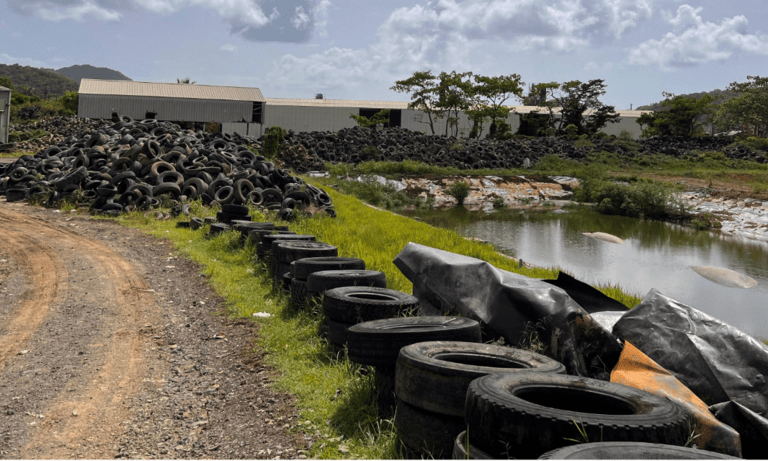
The World Health Organization calls air pollution the number one environmental threat to health in the Americas. More than 60,000 people in Latin America died prematurely from exposure to fine particulate matter and ozone in 2010. And with an increasing number of vehicles on the region’s roads, lax or non-existent emissions standards, and more frequent wildfires, the number of deaths due to air pollution in the region is predicted to increase.
Regulations restricting vehicles in dense urban areas, better emission controls, and changes in the use of polluting cooking and heating stoves, among other policies, could make an enormous difference. So might forward-looking innovations in public transport, electric vehicles, and the design of bicycle- and pedestrian-friendly spaces. But these solutions take time to implement, and until pollution can be radically reduced, increasing behaviors to avoid pollution exposure may protect people from its harmful effects.
An Experiment on Air Pollution Alerts and Reminders
To engage in effective avoidance behavior, citizens need information on which days are likely to have high pollution and they need ways of changing behavior that reduce their exposure. We conducted a randomized control trial in Mexico City to study the impact of providing air pollution alerts and reminder messages on households’ air pollution information and avoidance behavior.
The results of our study suggest that in cities with long and well-known histories of high air pollution, like Mexico City where air pollution levels regularly exceed World Health Organization standards, the population is already concerned about air quality. Indeed, during our baseline survey nearly 95% of respondents indicated that air pollution is a problem or a large problem in the city. In these contexts, air pollution information that is not frequent and salient is ineffective. Even alerts that increase the salience of air pollution may have limited effects on people’s exposure to it.
During the baseline survey, households were randomized into four treatment groups and their respective control groups: (1) 50% higher compensation for completing the baseline survey, (2) a free protective mask, (3) one-year subscription to pollutant-specific SMS air quality alerts, and (4) a one-year subscription to monthly pollution trend and avoidance behavior SMS reminders. We also measured participants’ willingness to pay for the one-year subscription to SMS air quality alerts after revealing their compensation level and whether they would receive a free protective mask, but before revealing whether they would receive the SMS air quality alerts or reminders.
Higher compensation increased willingness to pay for the air quality alerts, indicating that the amount of compensation or cash-on-hand influenced willingness to pay. There was no significant effect of receiving a free protective mask on willingness to pay for the air quality alerts. Male, younger, and higher- income respondents had greater willingness to pay for the SMS air quality alerts, implying that willingness to pay for air quality alerts is likely to increase over time as younger cohorts comprise a larger share of the population and incomes rise. We also found that respondents who perceived high pollution in recent days had greater willingness to pay for the SMS air quality alerts but that willingness to pay is uncorrelated with the reality of recent high pollution days.
Impacts on Information and Avoidance Behavior
We followed up with households approximately five months after the baseline survey to measure air pollution information and avoidance behavior. Preliminary results suggest that households in the alerts treatment were aware of the alerts, and the alerts increased the salience of air pollution for them. Households in the alerts treatment were more likely to report that they received air pollution information from SMS alerts and were less likely to report that they received air pollution information from television. Households in the alerts treatment were also more likely to report that there was a high air pollution day in the past week, but they were not more accurate in identifying recent high pollution days (days on which they had received an SMS alert).
Preliminary results suggest that households in the alert and mask treatment were more likely engage in pollution avoidance behavior but these behavior changes were unlikely to significantly reduce their exposure to ambient air pollution. Households in the alerts treatment were more likely to report changing their behavior on the last perceived high pollution day, and households that received a protective mask were more likely to report having used one in the previous two weeks, but they were no more likely to report having used a protective mask on the specific days with high particulate matter. These results are also indicative of an increase in the general salience of air pollution for households in the alerts treatment.
In contrast to the alerts, the reminders were not frequent or prominent enough to increase the salience of air pollution in people’s minds. We found that the reminder treatment had no effect on households’ air pollution information or avoidance behavior.
The Limitations of Air Pollution Alerts
Air pollution alerts are clearly not conveying as much information as they were intended to. Although information can be provided through information communication technologies at low cost, these policies might not change behavior in ways that would protect the population. This is consistent with findings that Canadian smog advisories had limited impacts on information and behavior change and that information nudges intended to reduce risk-taking during the Covid-19 pandemic also fell short, particularly in contexts in which there was already significant awareness of the problem.
Changing behavior by increasing awareness is difficult, especially when people have limited attention and competing interests. As air pollution continues to exact an immense toll in Latin America and the Caribbean in terms of wellness, productivity, and mortality, more paternalistic policies may be needed to safeguard individual citizens and society.
Publisher: Source link











